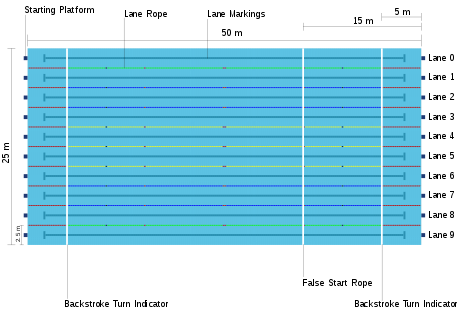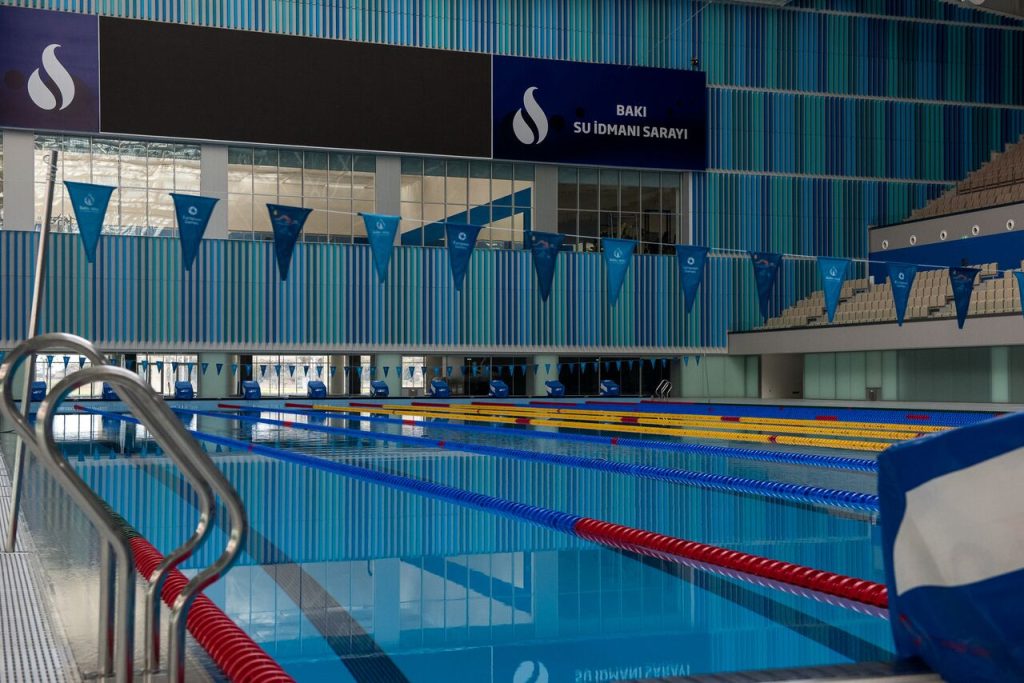The Olympic pool is a place where the world’s best athletes come together to showcase their swimming skills and compete for gold. But have you ever wondered just how deep these pools are? In this article, we’ll dive into the depths of the Olympic pool and explore the reasons behind its specific dimensions.

Credit: en.wikipedia.org
The Standard Depth of an Olympic Pool
The standard depth of an Olympic pool is 2 meters or approximately 6.6 feet. This depth is consistent across all Olympic swimming events, including freestyle, butterfly, backstroke, and breaststroke. The pool’s dimensions are carefully regulated to ensure fair and consistent competition for all athletes. By the way, if you want to know how big an Olympic pool is then you can read our previous article.
Why is the depth of the Olympic pool set at 2 meters? The main reason is to minimize the impact of waves and turbulence caused by the swimmers’ movements. A deeper pool reduces the disturbance created by the swimmers and allows for faster swimming times. It also provides enough water depth for the athletes to execute their turns and dives without the risk of hitting the bottom.

Credit: www.nytimes.com
Pool Design and Construction
Building an Olympic pool involves meticulous planning and construction to meet the required standards. The pool dimensions must adhere to specific guidelines set by the International Swimming Federation (FINA), which governs competitive swimming events worldwide.
The pool’s length is 50 meters, while the width can vary between 25 and 30 meters. The depth is maintained at a constant 2 meters throughout the entire pool. These dimensions ensure uniformity across all Olympic pools, enabling athletes to adapt to the pool conditions no matter where they compete.
In addition to the dimensions, the pool’s design includes specific features to aid swimmers’ performance. The pool walls are often equipped with non-reflective tiles to minimize glare and improve visibility for the athletes. The bottom of the pool is typically made of a non-slip material to prevent accidents during starts and turns.
Other Types of Pools
While the Olympic pool has a standard depth of 2 meters, there are other types of pools with varying depths depending on their intended use. Let’s take a look at some of these pools:
Recreational Pools
Recreational or public pools are designed for leisure activities and are typically shallower than Olympic pools. The depth can range from 1 to 1.5 meters (3.3 to 4.9 feet) to accommodate individuals of different heights and swimming abilities. These pools often include additional features such as water slides, diving boards, and shallow play areas for children.
Diving Pools
Diving pools, as the name suggests, are specifically designed for diving competitions. These pools have a variable depth, typically ranging from 3 to 5 meters (9.8 to 16.4 feet). The increased depth allows divers to perform complex dives without the risk of hitting the bottom. Diving pools also include platforms or springboards of different heights to cater to various diving techniques.
Training Pools
Training pools are used by athletes and swimming enthusiasts to practice and improve their skills. These pools can have different depths depending on the specific training requirements. Some training pools may have a shallow end for beginners and a deeper end for advanced swimmers to perform endurance exercises.
Frequently Asked Questions
Final Words
The Olympic pool, with its standard depth of 2 meters, provides the ideal environment for swimmers to compete at the highest level. The carefully regulated dimensions ensure fair competition and allow athletes to showcase their abilities without the interference of waves and turbulence. Whether it’s the Olympic pool, a recreational pool, or a diving pool, each type serves its purpose and offers unique experiences for swimmers around the world.




